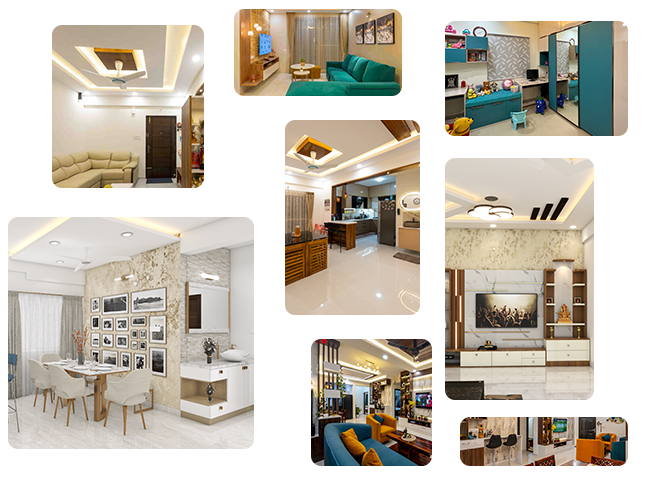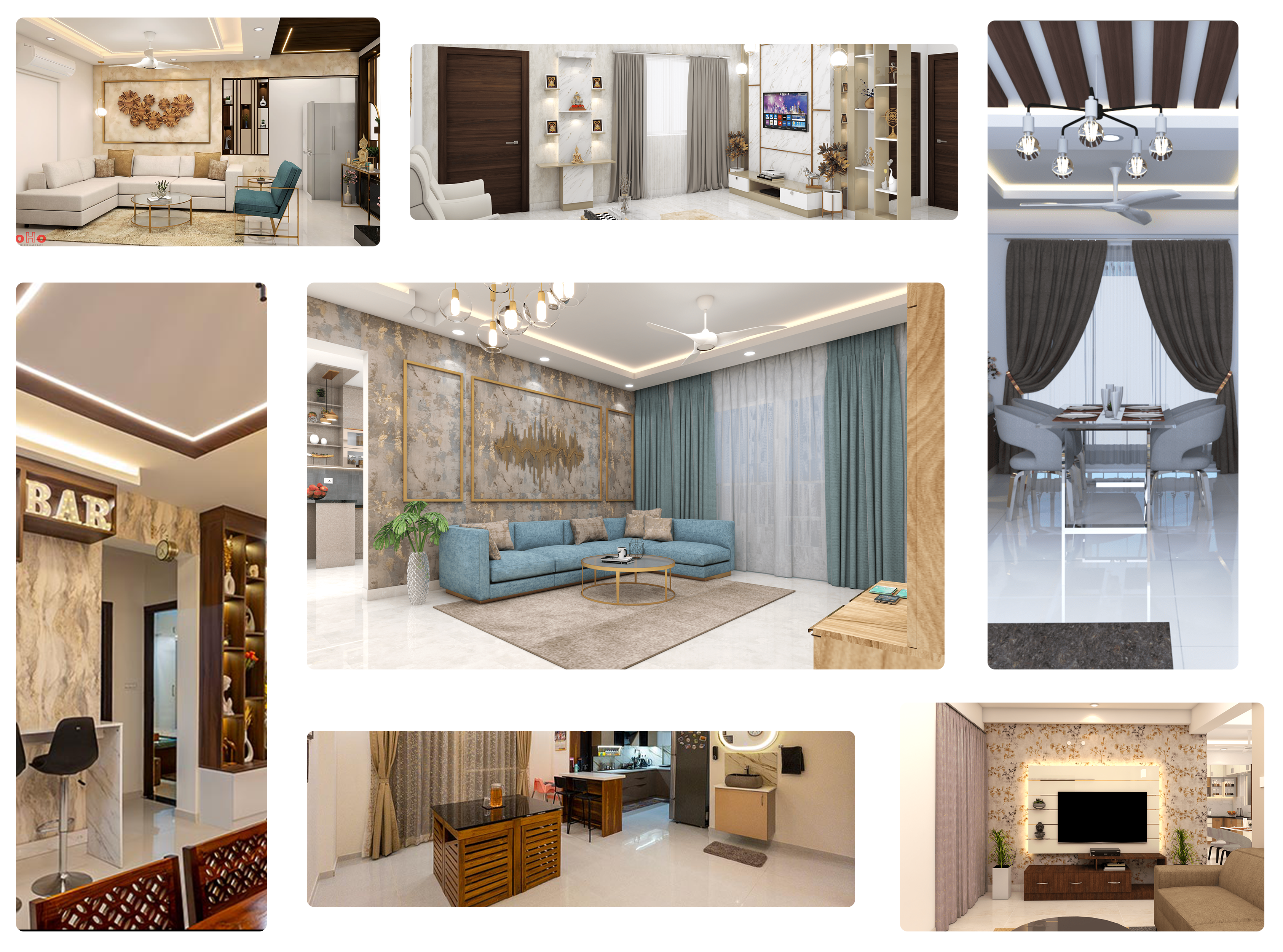The living room is the heart of every home, where family and friends gather to relax, celebrate, and create memories. Designing this space to be functional and stylish is essential, and that’s where YoHo Designs, the experts in Living Room Interior Design in Bangalore, step in.
We specialize in creating living rooms that reflect your personality while ensuring maximum comfort and practicality.
Why Modern
Living Room Design Matters
Modern living room design is more than just aesthetics. It’s about creating a space that blends functionality with beauty. A well-designed living room can:
 Improve the overall look of your home.
Improve the overall look of your home.
 Create a welcoming and cozy atmosphere
Create a welcoming and cozy atmosphere  Maximize space with intelligent furniture and layouts.
Maximize space with intelligent furniture and layouts.
 Improve natural lighting and airflow.
Improve natural lighting and airflow.
We understand the importance of these elements and strive to deliver tailored solutions for every client.


Transform Your Living Room with YoHo Designs
A well-designed living room enhances the comfort and beauty of your home, making it a space you’ll love spending time in. At YoHo Designs, we combine creativity, expertise, and quality to deliver the best Living Room Interior Design Bangalore offers.
Whether you want a minimalist modern design or a cozy traditional feel, we’ve got you covered.
Let us transform your living room into a space that’s not only functional but also a true reflection of your style.
Our Approach to
Living Room Interior Design in Bangalore
Understanding Your Needs
We begin with an in-depth consultation to understand your requirements, lifestyle, and design preferences. Whether you prefer a minimalist look or a luxurious feel, we tailor our designs accordingly.
Space Planning
Bangalore homes often face space constraints, but our expert designers maximize every square foot. We focus on layout efficiency, ensuring your living room feels open and functional.
Choosing the Right Elements
To create a cohesive design, every element is carefully selected, from furniture and lighting to color schemes and decor.
Modern Touches
Modern living rooms often feature clean lines, neutral tones, and innovative materials. We incorporate these elements to give your space a contemporary yet timeless appeal.
Key Features of Modern Living Room Interior Design
Furniture Selection
Modern designs prioritize comfort and simplicity. We choose furniture pieces that are stylish yet functional, such as modular sofas, sleek coffee tables, and ergonomic chairs.
Color Palette
Neutral tones like white, beige, and gray are staples in modern living room designs. We incorporate bold accent colors through cushions, rugs, or artwork to add personality.
Lighting Solutions
Lighting plays a crucial role in setting the mood of your living room. We integrate layered lighting, combining natural, recessed, and statement fixtures for a balanced and inviting ambience.
Storage Solutions
Smart storage is essential for maintaining a clutter-free living room. We design custom-built cabinets, shelves, and multipurpose furniture to organize your space.
Decor and Accessories
The right decor adds character to your living room. From wall art and vases to indoor plants, we ensure every piece complements the overall design.
Transform Your Living Room with YoHo Designs
Expert Designers
Our team has years of experience creating beautiful and functional living rooms.
Customized Solutions
We tailor every design to match your taste and requirements.
Affordable Pricing
High-quality designs don’t have to break the bank. We offer budget-friendly services without compromising on quality.
On-Time Delivery
Your time is valuable, and we ensure timely project completion.
Customer Satisfaction
Your happiness is our top priority. We work closely with you to exceed expectations.
Frequently Asked Questions
The cost depends on the size of your space, materials used, and design complexity. YoHo Designs offers affordable solutions tailored to your budget.
Absolutely! At YoHo Designs, we create personalized designs to reflect your tastes and preferences.
The timeline varies based on the project scope, but we ensure timely completion without compromising quality.
We use high-quality materials like wood, glass, metal, and eco-friendly options for durability and style.
Yes, we help you choose and arrange furniture to complement the overall design of your living room.
Start your journey to a beautiful living room with YoHo Designs. Contact us to discuss your ideas, and let our experts bring them to life!
Transform your living room today with YoHo Designs, your trusted partner for Living Room Interior Design in Bangalore!

